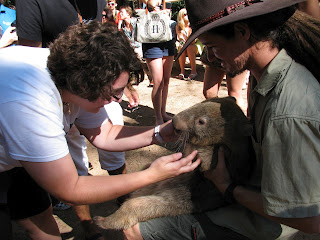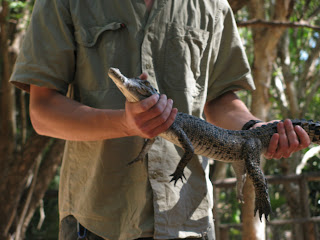Today was the best kind of day. My friend Maddie and I decided over lunch to hike up Castle Hill. The giant pink granite mountain randomly in the middle of Townsville.
Castle Hill
Castle Hill is 938ft high and is a popular hiking and lookout spot (you can drive to the top if you want to cheat). We were told that the goat path (the orange line on the map) was the best rout to take. As you can see from the map, it is also the shortest, which means it is also the steepest.
Nevertheless, we pushed on, finally finding the trail head after climbing probably the steepest road in Australia
and were informed that there were 1315 steps from that point to the top of the Hill.
The smile is because I had yet to realize that those 1315 steps were actually 1315 stairs. Huffing and puffing, I followed my significantly more fit friend up the seemingly endless staircase in an attempt to gain the best vantage point in the city. It was rough. A real battle between us, and the miserable sadist who decided to make the steps ridiculously tall and uneven and out of the stones and rocks they could find in the area. After a bit more than a kilometer of just miserable stone stairs, we won, and were awarded the most beautiful view of the city we are currently calling home
The landmass in the distance is Magnetic Island. Fun fact, the area between the island and the mainland is registered as a nursery for tiger sharks, not that any have attacked in any recent years, but this is where the mommas come to lay their egg cases.
After the significantly less painful, but just as difficult trip back down (we nearly fell several times) we decided we deserved gelato, and walked to the Strand, the beach along the waterfront, were we procured the delicious dessert and sat on the beach for a while. It was gorgeous. There is nothing like a cold treat on a hot day, on a beautiful beach, after a long and difficult challenge. It was a good ending to a great adventure :)
Thanks to:
for the picture of Castle Hill and its stats and to
for the lovely map
















































